How to Properly Dispose of Waste
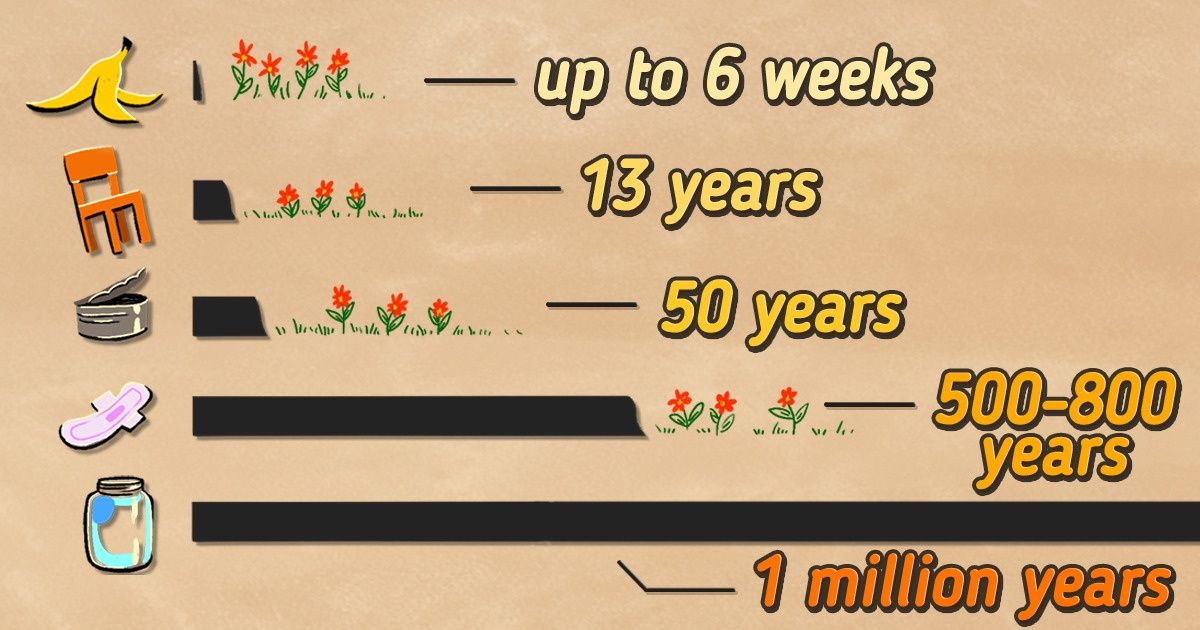
Banana peels can decompose in the ground in just 6 weeks if the conditions are favorable, clothes made from natural fabrics decompose within 6 to 12 months. An aluminum can takes 80 to 100 years to do this, a disposable diaper takes 250 to 500 years, and a glass bottle takes 1 million years.
5-Minute Crafts would like to tell you about the proper ways of disposing of different types of waste. And in the bonus section, you’ll see how long it takes for different types of waste to completely decompose.
Household waste can be divided into organic (biodegradable) and inorganic (which is very difficult to decompose by microorganisms). At the same time, inorganic waste is divided into non-hazardous (recyclable materials, inert waste, like for example, construction waste, and composite waste) and hazardous (electronics, medical waste, chemicals, etc.).
The proper disposal of waste directly depends on its type and degradability.
Organic waste
Organic (biodegradable) waste decomposes into simple organic compounds in the process of decay. It includes various food waste, paper, natural waste (cut grass, leaves, branches, etc.), and biodegradable plastic. It also includes waste generated in the process of human or animal life.
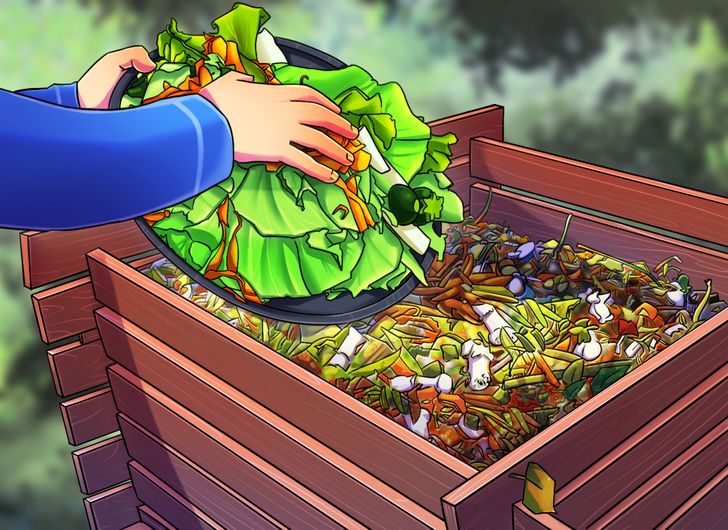
One of the best ways to dispose of organic waste is through composting. This way, you will not only get rid of a large amount of garbage, but you’ll also get an excellent fertilizer.
Recyclable waste
Recyclable waste can be reused after processing. It includes paper, cardboard, glass and plastic bottles, tin and aluminum cans, metal products, clothing, some types of plastic, etc. Some materials require several hundred years (or even more) to decompose in the ground, so the most proper way to deal with this waste is to prepare it for recycling— meaning it needs sorting.
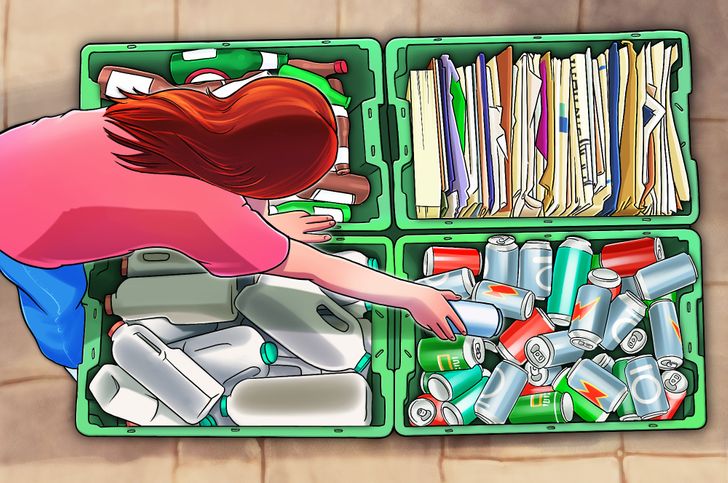
Clothing can be donated to shelters, thrift stores, or large chain stores that support a recycling program. Old magazines, newspapers, paper, and cardboard should be taken to waste paper collection centers, books should be given to a library or a charity (for example, an orphanage or a nursing home). Metal objects, plastic, and glass can be handed over to a local recycling center.
Also, if your city has special recycling containers, you can use those.
Inert waste
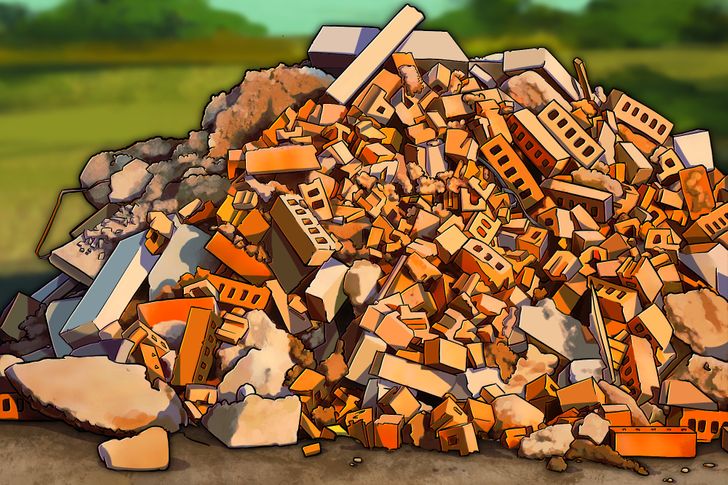
Before you get rid of this type of waste, ask yourself: do I really need to get rid of it? Construction waste can be used in the footing of small summer constructions (gazebos, barbecue areas, etc.), in garden paths, flower beds, etc. Small stones, pieces of asphalt, or broken bricks can fill in holes on a road.
If you don’t need any of these materials, you can give them to those who are currently engaged in construction. You can also contact active waste landfills and agree with them on the disposal of the waste you don’t need.
Other non-recyclable waste
Some items can’t be composted, recycled, or reused due to the nature of their composition. They include those that consist of several types of plastic, used personal hygiene items (cotton pads, diapers, sanitary napkins), toothpaste tubes, snack packaging, etc.
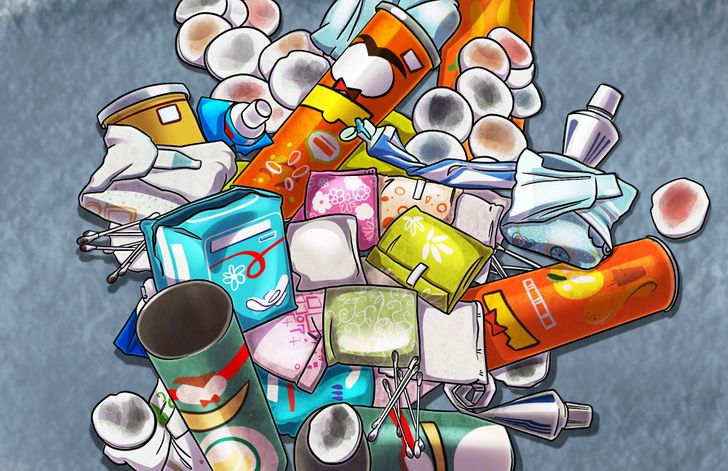
It is extremely difficult to dispose of these items in an environmentally friendly manner, so they should simply be placed in a trash bin and taken to a landfill.
However, this doesn’t mean that there is nothing else you can do. Each of us is able to reduce the amount of non-recyclable waste we generate by developing the habit of using more environmentally friendly reusable items instead of disposables.
Hazardous waste
Hazardous waste includes all types of toxic, flammable, corrosive, and reactive waste. It can pollute the soil and harm humans and nature, so you need to be especially careful with its disposal.
Hazardous waste includes household chemicals, pest control products, fertilizers, paints, medical and pharmaceutical waste, batteries, electronics, fluorescent lamps, etc.
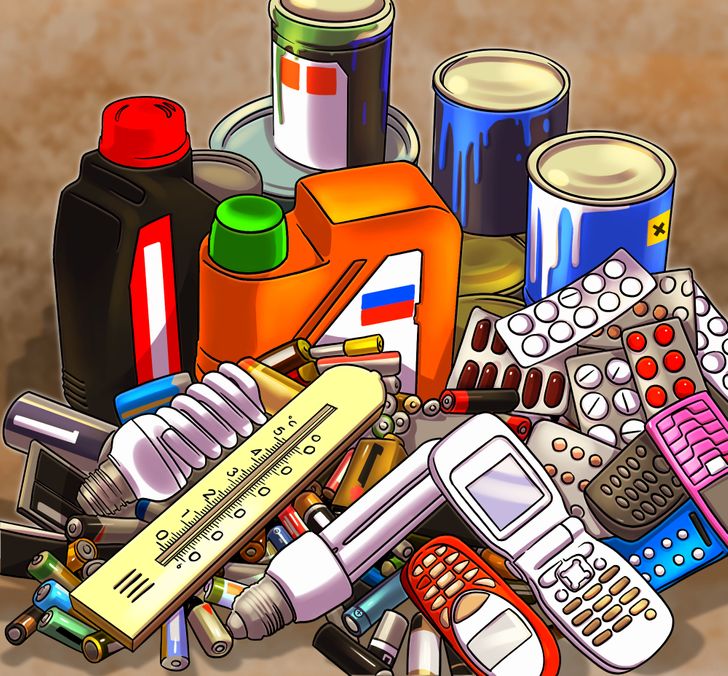
The most important rule of the disposal of hazardous waste is that it must not be thrown away with the regular waste.
- Batteries tossed to a garbage bin can ignite and, if they get into the soil, they can poison it as well as waste water. To safely dispose of batteries, take them to one of the designated collection centers, which are often located in large stores and malls. An old car battery can be returned to the dealer where you can buy a new one.
- Used motor oils can be recycled. You can take them to a motor oil collection point at auto stores, gas stations, or service centers. If not properly disposed of, 1 gallon of motor oil can contaminate 1 million gallons of fresh water. Keep this in mind before sending used motor oils to a landfill.
- Electronic devices include components that can be reused as well as parts that can seriously harm the environment. The most sustainable way to dispose of old electronics is through a recycling center. Many manufacturers also run recycling programs for their products. You can contact their official representatives to return old devices.
- Paints and varnishes contain chemical components that can harm humans, animals, and the environment, therefore they are classified as hazardous waste. You can keep the remains of the paint, and use it later for other purposes (with good sealing, cans with varnishes and enamel paints can be stored for 10 to 15 years). If you are sure you won’t need this paint anymore, donate it to a school, theater, or charity. You can try to return whole cans of paint to the store, or hand over already opened cans to recycling companies. As a last resort, you can dry the paint residue in the sun, mix it with cat litter, and dispose of it with the rest of the waste in the usual way.
- Fluorescent light bulbs contain a small amount of mercury and should not be disposed of with regular household waste. Take the bulbs to a recycling center where they will be taken care of.
- Mercury thermometers contain about 500 mg of mercury, which can be harmful to our health if the thermometer is broken. For safe disposal, take a thermometer to a company that supports a hazardous household waste collection program. Some companies will replace the old mercury thermometer with a modern electronic one.
- Medications, if improperly disposed of, can contaminate groundwater, so you should not pour them into the toilet or throw them into the trash bin. Many countries have “take-back” programs that collect and dispose of medications. Try to find a collection point in your area. If this option is not available to you, mix medications with cat litter, place them in an airtight container, and after that toss them in the trash bin.
Bonus: How many years it takes different types of waste to decompose
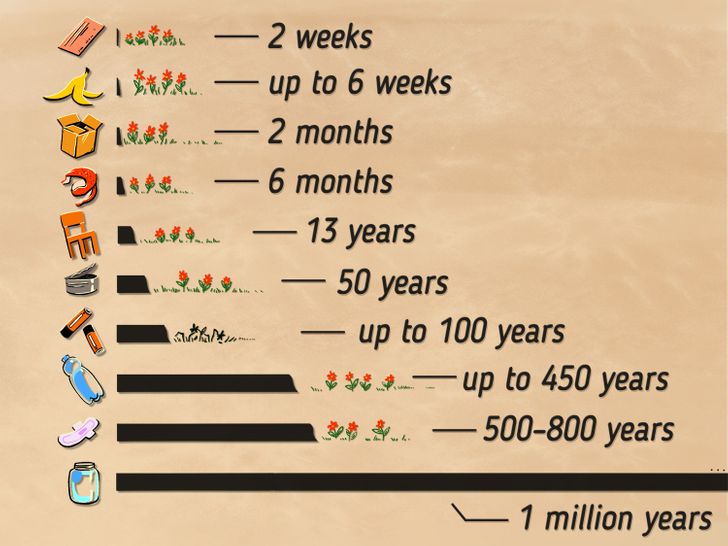
- A train ticket — 2 weeks
- Banana peel — up to 6 weeks
- A paper bag — 6 to 8 weeks
- Cardboard — 2 months
- A biodegradable plastic bag — 3 months or more
- Orange peel — 6 months
- Clothing made from natural fabrics (wool, cotton, silk) — from 6 to 12 months
- A wooden chair — 13 years
- Leather shoes — from 25 to 40 years
- Nylon fabric — 30 to 40 years
- A tin can — 50 years
- An aluminum can — 80 to 100 years
- A battery — 100 years and more
- Plastic cutlery — up to 200 years
- A disposable diaper — from 250 to 500 years
- A plastic bottle — up to 450 years
- Electronics — up to 500 years
- A sanitary pad — from 500 to 800 years
- Glass — 1 million years (according to some sources, it doesn’t decompose at all)